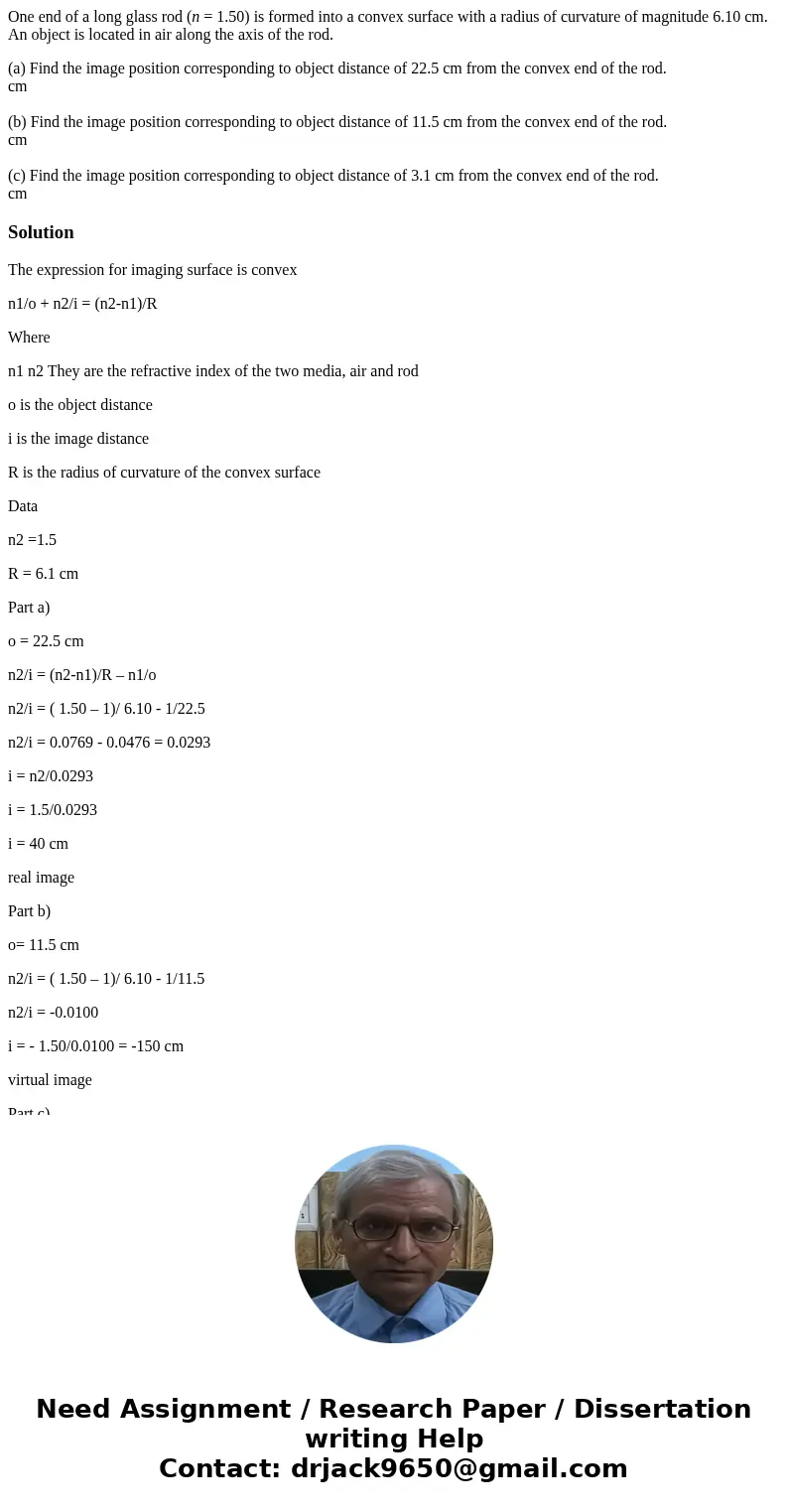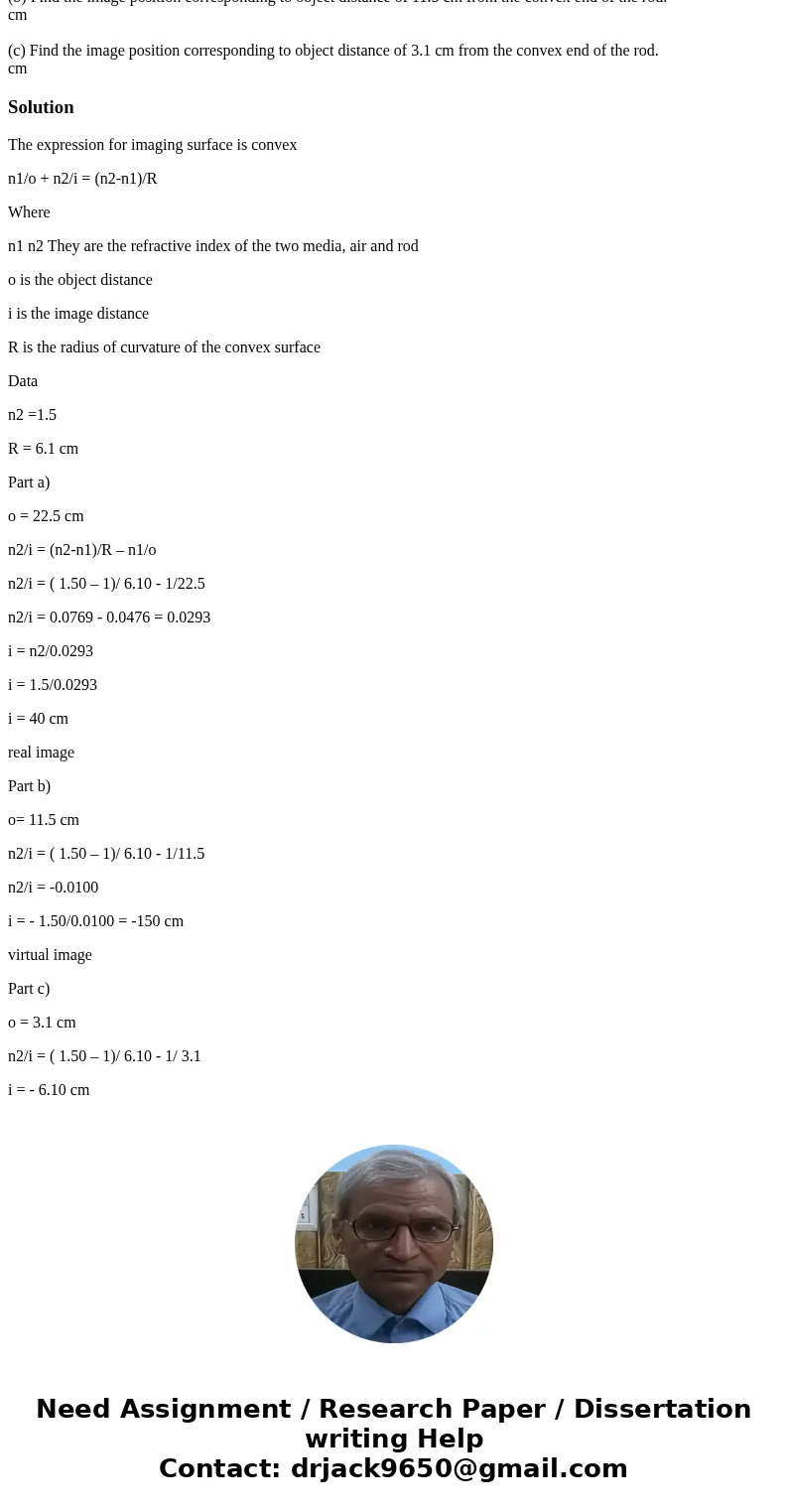One end of a long glass rod n 150 is formed into a convex s
One end of a long glass rod (n = 1.50) is formed into a convex surface with a radius of curvature of magnitude 6.10 cm. An object is located in air along the axis of the rod.
(a) Find the image position corresponding to object distance of 22.5 cm from the convex end of the rod.
cm
(b) Find the image position corresponding to object distance of 11.5 cm from the convex end of the rod.
cm
(c) Find the image position corresponding to object distance of 3.1 cm from the convex end of the rod.
cm
Solution
The expression for imaging surface is convex
n1/o + n2/i = (n2-n1)/R
Where
n1 n2 They are the refractive index of the two media, air and rod
o is the object distance
i is the image distance
R is the radius of curvature of the convex surface
Data
n2 =1.5
R = 6.1 cm
Part a)
o = 22.5 cm
n2/i = (n2-n1)/R – n1/o
n2/i = ( 1.50 – 1)/ 6.10 - 1/22.5
n2/i = 0.0769 - 0.0476 = 0.0293
i = n2/0.0293
i = 1.5/0.0293
i = 40 cm
real image
Part b)
o= 11.5 cm
n2/i = ( 1.50 – 1)/ 6.10 - 1/11.5
n2/i = -0.0100
i = - 1.50/0.0100 = -150 cm
virtual image
Part c)
o = 3.1 cm
n2/i = ( 1.50 – 1)/ 6.10 - 1/ 3.1
i = - 6.10 cm


 Homework Sourse
Homework Sourse